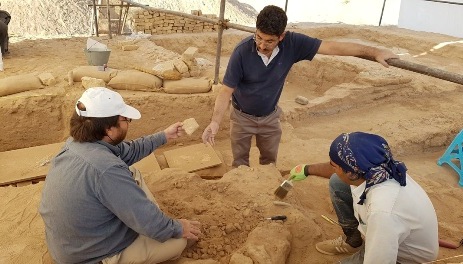
The Public Relations Office of the Research Institute of Cultural Heritage and Tourism (RICHT) quoted Morteza Hesari, the Iranian head of the seventh season of archeological explorations on Tappeh Sofalin announcing this on Sunday as naming several famous ceramics discovered in the explorations such as the fallen edge, pot-shaped, nose-handle (bird like) containers, banchini tray, dual and multiple color containers as the most important findings of that cultural period.
In this season of explorations and field studies better understanding of the morphology of the area in the early Elamite period which shows part of the period for the beginning of urban dwelling in Varamin and Pishva regions will be focused by Iranian-German delegation.
He referred to the location of the hill, with a span of about 20 hectares, in the northeast of the city of Pishva, in south of Tehran Province, said now due to the housing construction the expansion of the hill has been greatly reduced.
He added: “In terms of the geology the ancient Sofalin area has been located on part of the natural hills of the region and has embodied works of the pre-Holocene period layers in itself.
Referring to the location of the area in the eastern side of the fertile plain of Varamin and its categorization in terms of archeological “Formation of the area like the Shoghali Hill, Chaltasian and other areas in the region takes advantage of the pattern of proximity to the river (Jajrud branches) and easy access to it, he said.
9376**2050
Follow us on Twitter @IrnaEnglish
 solhkhabar | Peace International News Agency Peace International News Agency , Peace News , International Agency News of Peace
solhkhabar | Peace International News Agency Peace International News Agency , Peace News , International Agency News of Peace